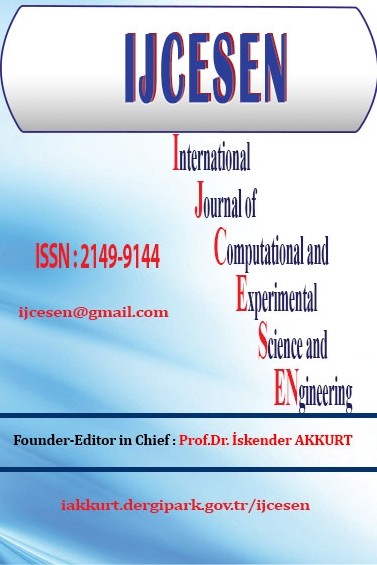Clustering of European Countries in terms of Healthcare Indicators
Clustering of European Countries in terms of Healthcare Indicators
Data mining, Clustering Healthcare indicators, EU countries,
___
- F. Ersöz Türkiye ile OECD ülkelerinin sağlık düzeyleri ve sağlık harcamalarının analizi, İstatistikçiler Dergisi, 2 (2008) 95–104.
- F. Lorcu, B. A. Bolat, A. Atakisi, Examining Turkey and Member States of European Union in Terms of Health Perspectives of Millennium Development Goals, Quality & Quantity, 46 (2012) 959-978. DOI: 10.1007/s11135-011-9648-1
- N. Alptekin, Comparison of Turkey and European Union Countries’ Health Indicators by Using Fuzzy Clustering Analysis, International Journal of Business and Social Research, 4 (2014) 68-74. DOI: 10.18533/ijbsr.v4i10.607
- K. E. Lewandowski, S. H. Sperry, B. M. Cohen, D. Öngür, Cognitive variability in psychotic disorders: a cross-diagnostic cluster analysis, Psychological Medicine, 44 (2014) 3239-3248. DOI: 10.1017/S0033291714000774
- D. K. Moser, K. S. Lee, J. R. Wu, G. Mudd-Martin, T. Jaarsma, T. Y. Huang, X.Z. Fan, A. Strömberg, T. A. Lennie, B. Riegel, Identification of symptom clusters among patients with heart failure: An international observational study, International Journal of Nursing Studies 51 (2014) 1366-1372. DOI: 10.1016/j.ijnurstu.2014.02.004
- C. H. Olson, S. Dey, V. Kumar, K. A. Monsend, B. L. Westra, Clustering of elderly patient subgroups to identify medication-related readmission risks, International Journal of Medical Informatics 85 (2016) 43-52. DOI: 10.1016/j.ijmedinf.2015.10.004
- S. Tsumoto, S. Hirano, H. Iwata, Mining Schedule of Nursing Care based on Dual-Clustering, Procedia Computer Science, 55 (2015) 1203-1212. DOI: 10.1016/j.procs.2015.07.125
- J. MacQueen, Proc. Fifth Berkeley Symposium on Mathematical Statistics and Probability, 21 June – 18 July, 1965 and 27 December, 1965 - 7 January, 1966 Berkeley-USA.
- T. M. Kodinariya, P. R. Makwana, Review on determining number of Cluster in K-Means Clustering, International Journal of Advance Research in Computer Science and Management Studies, 6 (2013) 90-95.
- World Bank (26.03.2016). World Development Indicators. Link: http://data.worldbank.org/data-catalog/world-development-indicators Access data: 26.03.2016.
- Yayın Aralığı: 4
- Başlangıç: 2015
- Yayıncı: Prof.Dr. İskender Akkurt
Wei ZHAO, Huiqing LIU, Chuan LU, Jing WANG, Lin MENG, Ruihong ZHONG
Experimental Comparison of Al5083 Alloy Subjected to Annealing and Equal-Channel Angular Pressing
Mehmet ŞAHBAZ, Hasan KAYA, Aykut KENTLİ, Mehmet UÇAR, Serkan ÖĞÜT, Kerim ÖZBEYAZ
Clustering of European Countries in terms of Healthcare Indicators
Natural Radiation Measurement in Some Soil Samples from Basra oil field, IRAQ State
Hadi ALBIDHANI, Kadir GUNOGLU, İskender AKKURT
Effect of Change in Radial Clearance on Pressure Variation of Fluid in Hydrodynamic Journal Bearing
Tolga PALANDIZ, Ramazan ŞENOL, Hilmi Cenk BAYRAKÇI
Utilization of Marble and Boron Waste in Brick Products
Atilla EVCİN, Bahri ERSOY, Hakan ÇİFTÇİ
The Key Factor Analysis to the Reservoirs on the Basis of Bayesian Law
Jian SUN, Qi LI, Mingqiang CHEN, Zekai ZHANG
Determination of The Cross Types to be used in a Trailer Chassis by Finite Element Method
